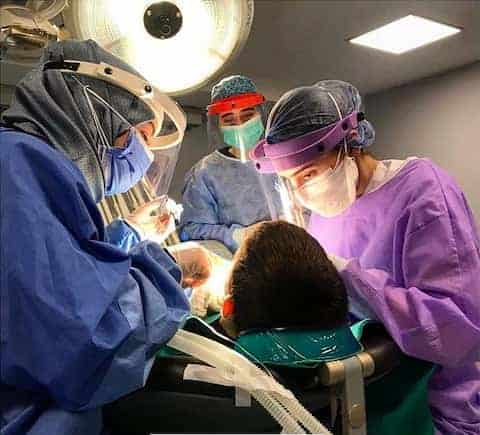Periodontology is the area of the specialized system of hard and soft tissues that support your teeth and keep them in their place in the jaw. This apparatus, known as the periodontium, has some very important functions: It securely attaches the teeth to the jaws.
It is the situation where the gum is pulled under the enamel layer, which is the protective layer of the tooth, and the root surfaces are exposed.
The surfaces of the teeth are not resistant to external factors. When gingival recession occurs, its roots are exposed. When gingival recession is not treated, sensitivity (leakage) and root caries may occur on the root surfaces over time and tooth can be lost.
Today, there are many treatments, both surgically and non-surgically, for gum recession. Surgically exposed root surfaces can be closed with microsurgical techniques and restored to their pre-extraction state or further recession of the gum can be prevented. Sutures are removed 10-14 days after the microsurgical procedure and the tissue is left to heal.
It is the case of bacterial plaque and tartar formed by the accumulation of food residues on the tooth and root surfaces, causing inflammation in the gums and causing bleeding and redness. Most of the time, these bacterial plaque and tartar are firmly adhered to the root surfaces of the teeth and cause the bone under the gum to dissolve due to inflammation. Swaying and abscess can occur in the teeth due to this bone resorption and teeth can be lost. When gum treatment is done, inflammation disappears and bone resorption stops.
Sometimes, gum surgery can be performed with microsurgical techniques and bone dust (graft) can be used to replace the lost bone.
In order to prevent the recurrence of gingivitis, teeth should be brushed as and often as recommended by the dentist and oral hygiene should be paid attention to.
Before all dental treatments such as implant treatment, crown, bridge, zirconium, filling and prosthesis, braces, gums should be checked, inflammation should be removed and then these procedures should be performed. Otherwise, severe gingivitis may occur in the future and the treatments performed fail.
Today, lasers are used in many areas in gum treatment. It is especially used to ensure the harmony of the gums called 'pink aesthetics' with the teeth, to eliminate gum growth and to increase the visibility of the teeth.
In addition, lasers can be used to eliminate gingivitis, accelerate wound healing and eliminate bacteria.
